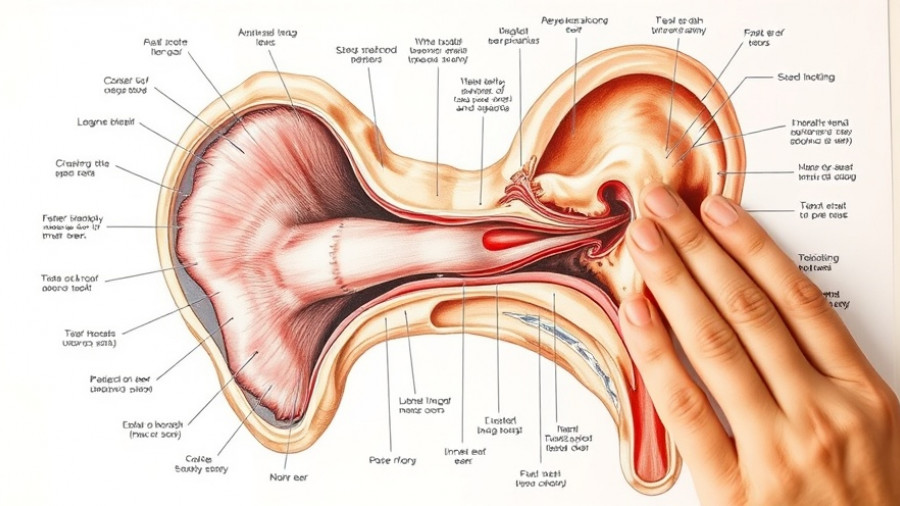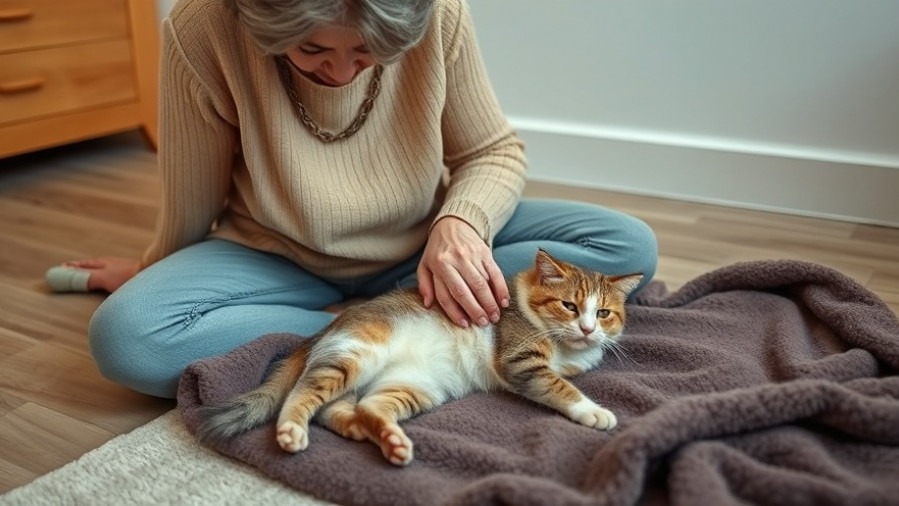
The Reality of Vestibular Disease in Pets
One minute your pet is steady on their paws; the next, they’re stumbling, tilting their head, or walking in circles as if the ground has shifted beneath them.
It’s sudden, confusing, and terrifying to witness. Many pet owners in Sacramento—and everywhere—have faced this moment, only to learn that the cause is something called vestibular disease.
Though the symptoms can look severe, this condition often has a good outcome. Understanding what’s happening inside your dog or cat’s body can help replace panic with purpose.
In 'Vestibular Disease in Dogs & Cats: What's the Most Likely Cause?', the discussion dives into a crucial topic concerning our pets' health, exploring key insights that sparked deeper analysis on our end.
Understanding the Vestibular System
An animal’s balance depends on a delicate communication network between the inner ear and the brain. The vestibular system detects movement and head position, sending signals that help pets stay upright and oriented. When any part of that system misfires, the world suddenly tilts—literally.
A dog or cat with vestibular disease may appear dizzy, lose coordination, or seem unable to control their eyes. According to Dr. John H. Rossmeisl Jr., veterinary neurologist at Virginia Tech, the key to treatment lies in pinpointing the origin of those symptoms:
“Neuroanatomic localization of observed vestibular signs is paramount to managing the patient with vestibular dysfunction.”
In other words, your veterinarian needs to determine where the problem begins—whether in the ear or the brain—to know how best to treat it.
Recognizing the Signs Early
The onset is usually abrupt. A once-energetic dog may suddenly tip to one side or fall when trying to walk. Cats may crouch low, move in circles, or dart their eyes rapidly from side to side—a reflex known as nystagmus.
Many owners fear their pet has suffered a stroke because the symptoms can appear so extreme.
But in most cases, vestibular disease is not life-threatening. Acting quickly, however, still matters. The faster you involve your vet, the faster you’ll know whether the cause is temporary or something that requires deeper medical care.

Why a Veterinary Exam Is Crucial
When vestibular symptoms appear, it’s natural to want to comfort your pet first. Clear a safe space, block off stairs, and keep them calm. Then call your veterinarian.
A timely exam helps rule out more serious issues and identify whether the problem is peripheral (ear-related) or central (originating in the brain).
A complete evaluation may include ear exams, neurological tests, blood work, or even advanced imaging.
For many cat owners, the change can be jarring. A normally agile cat might suddenly seem unsure on its feet—hesitating, wobbling, or swaying as it tries to stand.
Its head may tilt noticeably, and its eyes can shift rapidly back and forth as though trying to stabilize the world around it.
That kind of sudden imbalance can be frightening to watch, but it’s one of the classic signs that the inner ear or balance centers of the brain are struggling. Acting quickly helps your veterinarian determine the cause and start your pet on the road to recovery.
What Causes Vestibular Disease?
Veterinarians group causes into two main categories.
Peripheral vestibular disease originates in the inner or middle ear. Triggers can include infections, inflammation, trauma, hypothyroidism, or even benign growths inside the ear canal (especially in cats). Certain medications have also been linked to vestibular side effects.
In many cases, though, there’s no clear reason at all. When that happens, it’s called idiopathic vestibular disease—meaning the cause is unknown. It’s most common in older dogs, earning it the nickname “old dog syndrome.”
Central vestibular disease, on the other hand, stems from brain involvement—such as tumors, inflammation, or trauma. These cases can be more complex and require advanced imaging or specialist referral.
A 2023 veterinary survey published in Frontiers in Veterinary Science defines idiopathic vestibular syndrome as:
“An acute or peracute onset condition of the peripheral vestibular system that improves quickly without central involvement.”
That’s why many pets with idiopathic cases recover almost completely, often within just a few weeks.

What Treatment Looks Like
Treatment depends on the cause, but most approaches focus on comfort and recovery.
For nausea, veterinarians often prescribe anti-emetic medications such as maropitant or meclizine. If dehydration or weakness is a concern, IV fluids and supportive care may be provided.
When an ear infection is the culprit, antibiotics or antifungal medication address the underlying issue.
For more serious or uncertain cases, short hospitalization ensures the pet can eat, drink, and regain strength safely.
At home, the goal is to create a calm, secure environment:
Keep your pet in a quiet, well-lit room with good traction underfoot.
Place food and water dishes at ground level and within easy reach.
Offer soft bedding and keep the layout consistent to avoid confusion.
Use a towel or harness to help steady dogs when walking.
Recovery can look different for every pet. The American College of Veterinary Internal Medicine (ACVIM) notes that improvement is often noticeable within 72 hours, with most dogs and cats returning to near normal in two to three weeks. A slight head tilt may linger in older pets, but it rarely affects their quality of life.
Living Through the Recovery
Watching your pet wobble or lose balance is emotionally draining. They may look frightened, and you may feel helpless. It’s okay to acknowledge that. What your pet needs most is a sense of calm and consistency.
Speak softly. Offer reassurance. Celebrate the small victories—the first steady step, the first meal eaten on their own. As the Cornell Feline Health Center emphasizes, recovery often requires as much patience as medicine.
Each day brings small but meaningful signs of progress, even when it doesn’t feel that way at first.

Community Awareness and Shared Experiences
As awareness grows, more pet owners are sharing their vestibular disease stories online and with local veterinarians. In communities like Sacramento, these conversations help others recognize the symptoms sooner and avoid the panic that often accompanies them.
Hearing from someone who’s been through it can bring comfort. A dog that couldn’t stand on Monday might be trotting around by the weekend. Those stories remind us that with the right care and time, recovery is possible.
The Takeaway
Vestibular disease can be one of the most alarming conditions for pet owners to witness—but it’s also one of the most misunderstood. For many dogs and cats, especially older ones, it’s a temporary imbalance that resolves with rest, reassurance, and veterinary guidance.
If your pet ever starts tilting their head, staggering, or showing rapid eye movements, don’t wait to see if it passes. Call your veterinarian. Early intervention and calm support can help your pet regain balance—and give you peace of mind.
With patience and good care, most pets do recover, returning to their usual happy, steady selves.
Disclaimer: This article is intended for informational purposes only and should not replace professional veterinary advice. If your pet exhibits any of these symptoms, consult your veterinarian promptly.
Discover more pet care insights and wellness inspiration in Healthy Pets, or visit Sacramento Living Well for the latest local lifestyle and wellness stories.
---
Authored by the Sacramento Living Well Editorial Team — a publication of DSA Digital Media, dedicated to highlighting wellness, local living, and inspiring community stories throughout Greater Sacramento.
 Add Row
Add Row  Add
Add 





Write A Comment